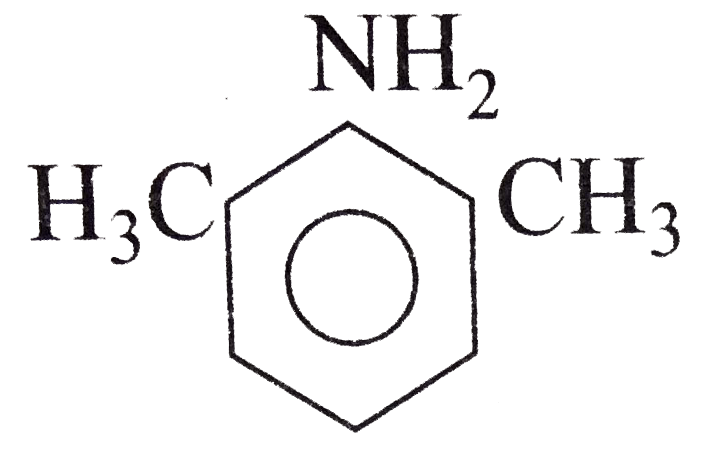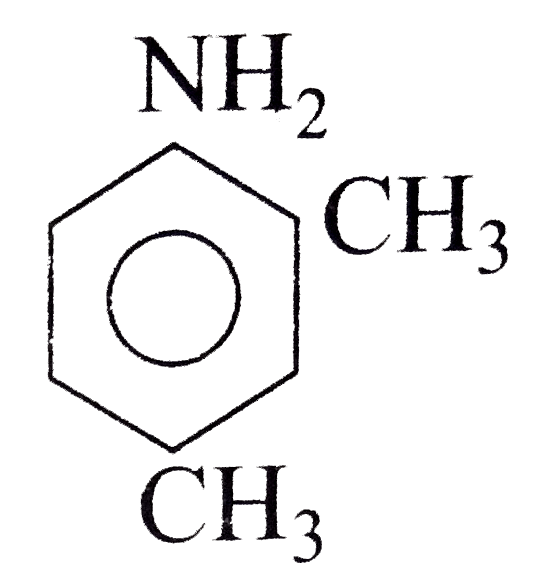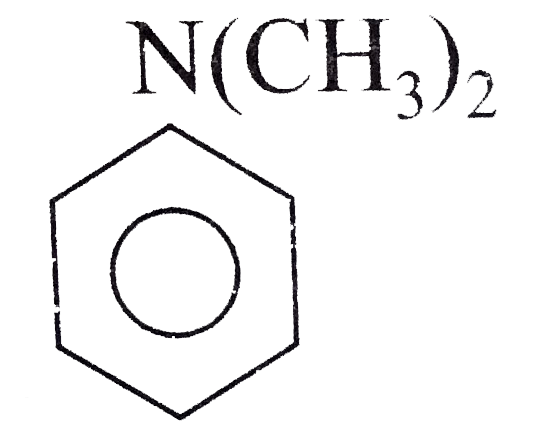Predict the organic products of the following reactions :
C6H5CHOH2NCONHNH2−−−−−−−−−→
To predict the organic products of the reaction between benzaldehyde (C₆H₅CHO) and hydrazinecarboxamide (H₂NCONHNH₂), we can follow these steps:
Step 1: Identify the Reactants
The reactants in this reaction are benzaldehyde (C₆H₅CHO) and hydrazinecarboxamide (H₂NCONHNH₂). Benzaldehyde contains a carbonyl group (C=O) and a hydrogen atom attached to the carbon, while hydrazinecarboxamide contains a hydrazine group (NH₂-NH) and a carbonyl group.
Step 2: Nucleophilic Attack
The nitrogen atom in the hydrazinecarboxamide acts as a nucleophile and attacks the carbon atom of the carbonyl group in benzaldehyde. This leads to the formation of a tetrahedral intermediate.
Step 3: Formation of the Intermediate
The nucleophilic attack results in the formation of an intermediate that has the following structure:
- The carbon of the carbonyl group is now bonded to the nitrogen from hydrazinecarboxamide.
- The oxygen from the carbonyl group becomes negatively charged (O⁻).
Step 4: Proton Transfer
In the intermediate, a proton transfer occurs. The negatively charged oxygen atom can take a proton (H⁺) from the nitrogen, leading to the formation of a hydroxyl group (–OH) and a positively charged nitrogen (NH₃⁺).
Step 5: Dehydration
The next step involves dehydration, where a water molecule is eliminated from the intermediate. The hydroxyl group (–OH) and a hydrogen atom from the nitrogen lead to the loss of water (H₂O), resulting in the formation of an imine (C=N).
Step 6: Final Product
The final product of the reaction is a hydrazone, which has the following structure:
- The phenyl group (C₆H₅) is bonded to a carbon atom that is double-bonded to a nitrogen atom (C=N).
- The nitrogen is also bonded to the carbonyl group from the hydrazinecarboxamide.
The final product can be represented as:
- C₆H₅CH=N-NH-CO-NH₂
Summary of the Reaction
The overall reaction can be summarized as:
C₆H₅CHO+H₂NCONHNH₂→C₆H₅CH=N−NH−CO−NH₂+H₂O
The reactants in this reaction are benzaldehyde (C₆H₅CHO) and hydrazinecarboxamide (H₂NCONHNH₂). Benzaldehyde contains a carbonyl group (C=O) and a hydrogen atom attached to the carbon, while hydrazinecarboxamide contains a hydrazine group (NH₂-NH) and a carbonyl group.
The nitrogen atom in the hydrazinecarboxamide acts as a nucleophile and attacks the carbon atom of the carbonyl group in benzaldehyde. This leads to the formation of a tetrahedral intermediate.
The nucleophilic attack results in the formation of an intermediate that has the following structure:
- The carbon of the carbonyl group is now bonded to the nitrogen from hydrazinecarboxamide.
- The oxygen from the carbonyl group becomes negatively charged (O⁻).
In the intermediate, a proton transfer occurs. The negatively charged oxygen atom can take a proton (H⁺) from the nitrogen, leading to the formation of a hydroxyl group (–OH) and a positively charged nitrogen (NH₃⁺).
The next step involves dehydration, where a water molecule is eliminated from the intermediate. The hydroxyl group (–OH) and a hydrogen atom from the nitrogen lead to the loss of water (H₂O), resulting in the formation of an imine (C=N).
The final product of the reaction is a hydrazone, which has the following structure:
- The phenyl group (C₆H₅) is bonded to a carbon atom that is double-bonded to a nitrogen atom (C=N).
- The nitrogen is also bonded to the carbonyl group from the hydrazinecarboxamide.
- C₆H₅CH=N-NH-CO-NH₂
The overall reaction can be summarized as:
C₆H₅CHO+H₂NCONHNH₂→C₆H₅CH=N−NH−CO−NH₂+H₂O
Topper's Solved these Questions
- BOOK - CBSE COMPLEMENTARY MATERIALCHAPTER - ALDEHYDES,KETONES AND CARBOXYLIC ACIDSEXERCISE - LONG ANSWER TYPE QUESTIONS (5 MARKS)21videos
ALDEHYDES,KETONES AND CARBOXYLIC ACIDS
- BOOK - CBSE COMPLEMENTARY MATERIALCHAPTER - ALDEHYDES,KETONES AND CARBOXYLIC ACIDSEXERCISE - SHORT ANSWER -I TYPE QUESTIONS (2 MARKS)30videos
ALDEHYDES,KETONES AND CARBOXYLIC ACIDS
- BOOK - CBSE COMPLEMENTARY MATERIALCHAPTER - ALCOHOLS, PHENOLS AND ETHERSEXERCISE - LONG ANSWER TYPE QUESTIONS (5 Marks)5videos
ALCOHOLS, PHENOLS AND ETHERS
- BOOK - CBSE COMPLEMENTARY MATERIALCHAPTER - AMINESEXERCISE - 5 MARKS7videos
AMINES
Similar Questions
Knowledge Check
- Question 1 - Select One
Predict the product of the following reaction
C6H5MgBr+CH3NH2→ .AC6H6BCH4CC6H5NHCH3DA mixture of all these - Question 2 - Select One
Predict the product of the following reaction C6H5CH2I1.CH3NH2,heat−−−−−−−−−−→2.H2,Ni .
AC6H5NH2B(C6H5)NHC(CH3)2NHDC6H5NHCH3 - Question 3 - Select One
Predict the end product of the following sequence of reactions
C6H5NH2CH3CI−−−→ACH3CI−−−→B .A B
B C
C DA mixture of all there
DA mixture of all there
Predict the products of the following reactions :
(i) C6H5CH2CH3KMnO4/KOH−−−−−−−−−→H+
(ii) CH3COOHNH3/heat−−−−−−→View SolutionPredict the major product of the following reaction: C6H6+(CH3)2CHCH2OHH2SO4−−−→
View SolutionPredict the product of the following reaction CH3NO2+C6H5CHOKOH(alc.)−−−−−−−→
View SolutionPredict the major product in the following reaction :
C6H5−CH2CO2CH3(i)CH3MgBr(Excess)−−−−−−−−−−−−−−→(ii)H⊕.View SolutionWhat will be the major organic product of the following reaction?
C6H5C2H5(i)Br2,hv−−−−−−→(ii)NaCNView Solution

